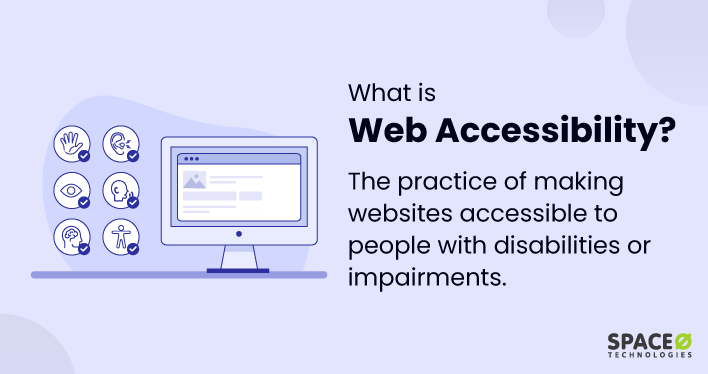Index Surge: Amplifying Your Insights
Stay updated with the latest trends and news across various industries.
Web Accessibility: Because Everyone Deserves a Seat at the Digital Table
Unlock the digital world for all! Discover why web accessibility matters and how it ensures everyone has a place at the table.
Understanding Web Accessibility: Key Principles and Best Practices
Understanding web accessibility is essential for creating inclusive online experiences. It ensures that websites are usable by people of all abilities and disabilities. The key principles of web accessibility are outlined in the POUR model: Perceivable, Operable, Understandable, and Robust. These principles guide web developers and content creators in designing web content that can be accessed by everyone. By adhering to these principles, you not only comply with legal standards but also broaden your audience reach, enhancing overall user satisfaction.
To implement best practices for web accessibility, consider starting with a few essential strategies:
- Use semantic HTML to ensure that screen readers can accurately interpret the content.
- Provide alternative text for images, so visually impaired users can understand the context.
- Ensure sufficient color contrast between text and background for users with visual impairments.
- Create keyboard navigable websites to accommodate users who cannot use a mouse.

The Importance of Inclusive Design: Why Web Accessibility Matters
Inclusive design is vital in today's digital landscape, ensuring that everyone, regardless of their abilities or disabilities, can access and engage with web content. By prioritizing web accessibility, we create an environment where users can navigate websites with ease, benefiting those with visual, auditory, motor, and cognitive impairments. As nearly 1 in 5 people live with some form of disability, implementing inclusive design principles is not just about compliance; it's about embracing diversity and enhancing the user experience for all.
Moreover, web accessibility contributes significantly to a brand's reputation and reach. Companies that adopt inclusive design practices demonstrate their commitment to social responsibility, fostering trust and loyalty among consumers. Engaging with a wider audience can lead to increased customer satisfaction and ultimately drive sales. Remember, when you prioritize inclusive design, you not only adhere to ethical standards but also position your brand as a leader in an increasingly competitive market.
Common Misconceptions About Web Accessibility Debunked
Web accessibility is often misunderstood, leading to common misconceptions that can hinder its implementation. One prevalent myth is that web accessibility is only necessary for individuals with disabilities. In reality, accessible design benefits everyone, including those using mobile devices or experiencing temporary impairments. Ensuring that your website is usable for a wide audience not only fosters inclusivity but also enhances overall user experience, which can be crucial for engagement and retention.
Another misconception is that achieving web accessibility is a complex and costly endeavor. While it might seem daunting, many web accessibility guidelines are straightforward and can often be integrated into the standard web design process without extensive resources. Moreover, the long-term benefits—such as improved search engine optimization and a broader audience reach—often outweigh the initial investment. Embracing web accessibility is not just a legal obligation; it's an opportunity for innovation and growth.